Traveling with your dog makes every trip sweeter. But having a well-trained travel buddy allows you to enjoy the experience even more! Teach your pup these simple skills and make the journey better for you both.
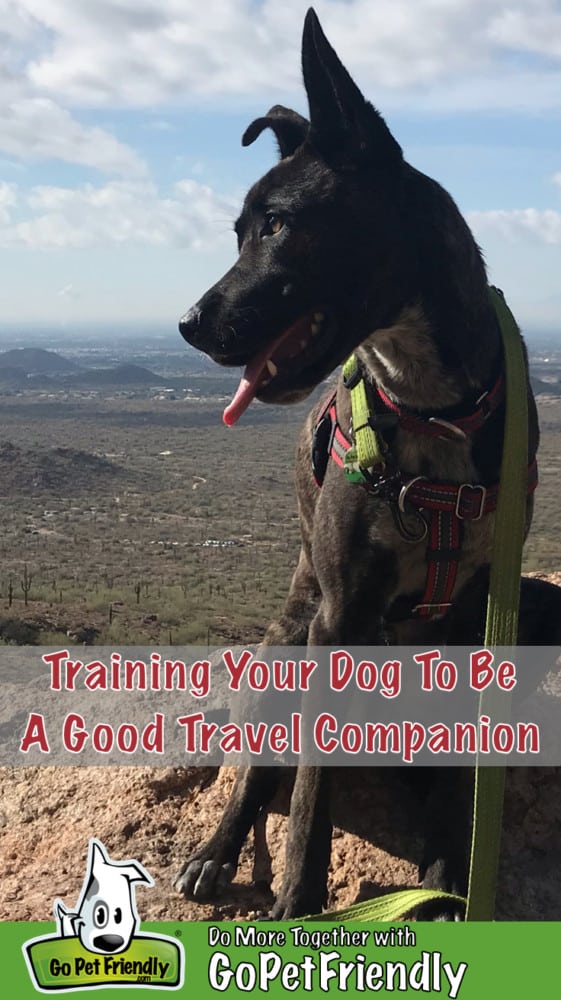
Whether you’ve just adopted your new best friend or decided now’s the time include your furry family member in your travel plans — congratulations! You’re embarking on one of the most rewarding activities you and your pup will share. And when you start by training your dog to travel, you’ll make every trip together even better.
It’s easy to get complacent about our dogs’ obedience training when we’re at home following the same routine day after day. We overlook the leash pulling, inappropriate greetings, and excited barking.
But things are different when you’re traveling. Vacations are for relaxing, and that’s just not possible when your dog drags you behind him on sidewalks and trails, jumps on strangers, and barks whenever he sees another dog. But even more importantly, training your dog to travel can help keep him safe … and out of doggy jail.
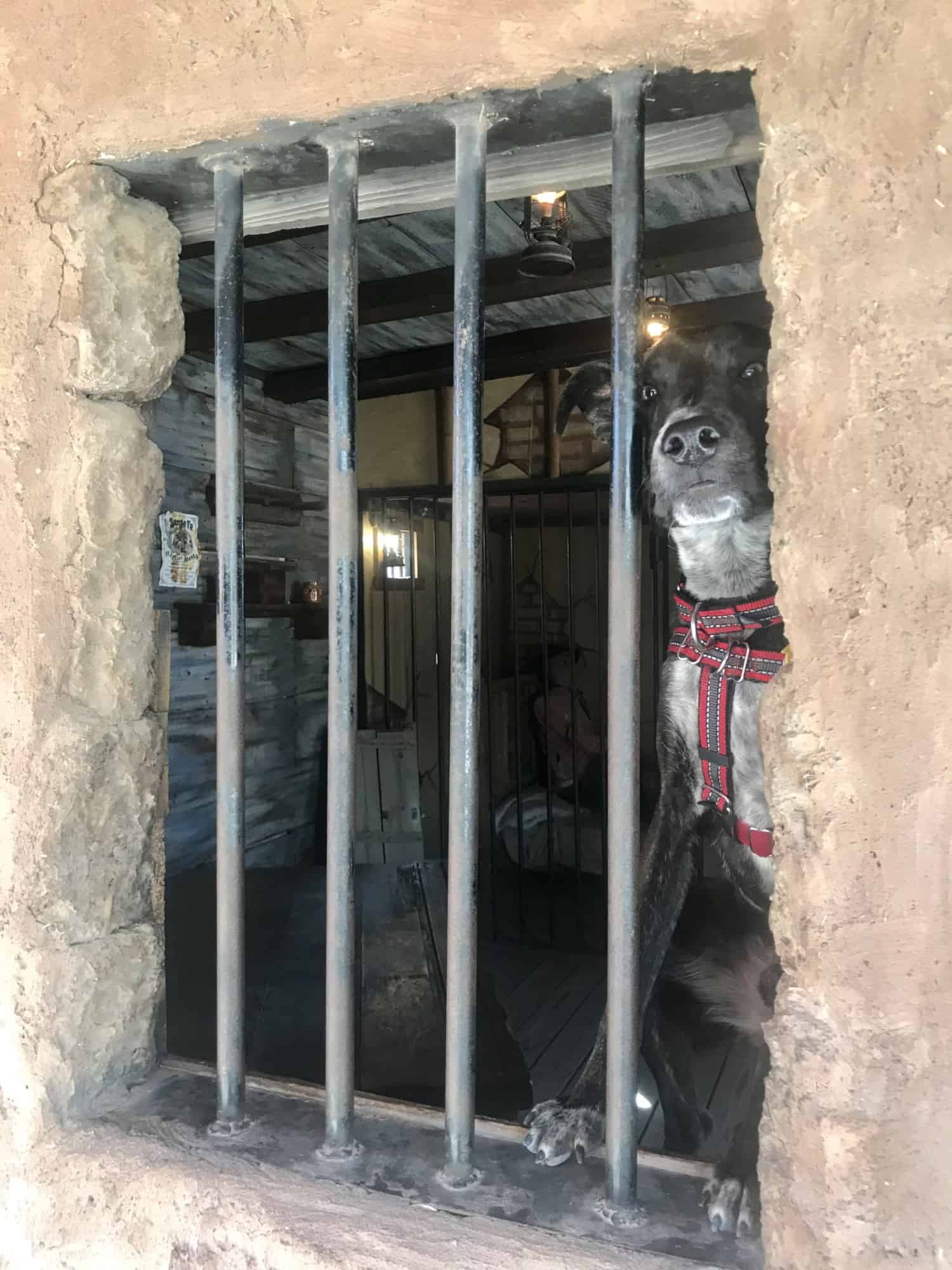
Tips for Training Your Dog To Travel
We all agree that traveling with a well-behaved dog is ideal, but how do we make it happen? Before we jump to the behaviors you’ll want to focus on, let’s quickly run though how to structure successful training sessions.
The most important thing to remember when training your dog to travel is that you should both be having fun! Following these tips will help:
- Plan frequent, short training sessions
- End your sessions while they’re still fun
- Remember that more challenging behaviors require more appealing rewards
- Add distractions gradually, and only after your dog understands what he’s expected to do
- If your dog is struggling with a behavior, take a step back and proceed more slowly
- Practice behaviors your dog has learned as part of your regular routines
These training tips are fairly simple. If you’d like more advice on how to train your dog, or to find a local trainer to help you, visit positive training sites like Ian Dunbar’s Dunbar Academy, Karen Pryor’s on clicker training, or Victoria Stilwell’s Positively.
Skills To Teach Traveling Dogs
Traveling with Ty and Buster, one fearful and one reactive dog, for ten years taught me a lot. We learned how to manage situations that were triggers for them, and some of their behavioral issues improved over time. But mostly I realized what I wished they’d learned before we hit the road!
READ MORE ⇒ Tips for Traveling With Fearful Dogs
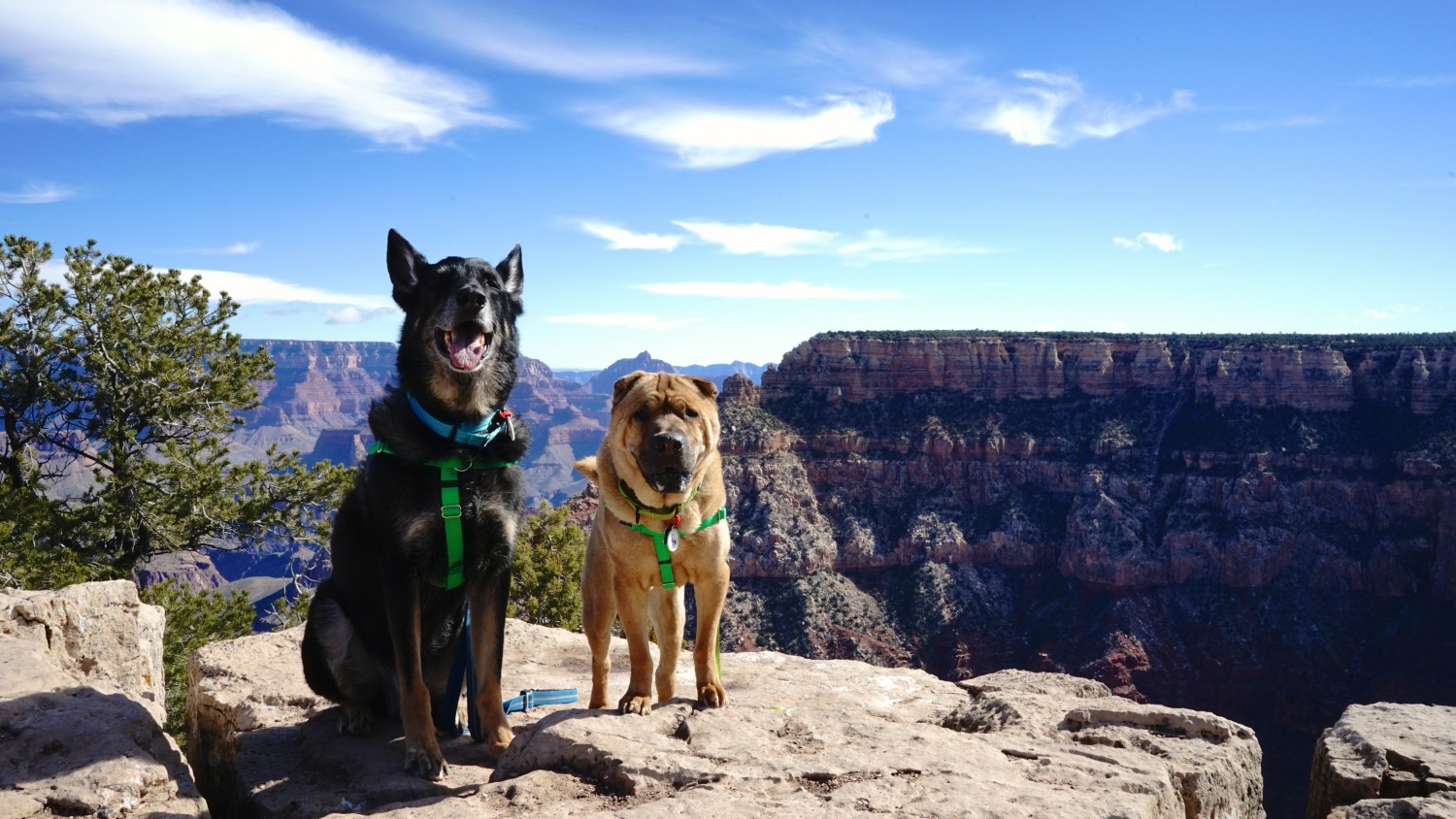
When Myles wandered into our lives, it was a chance to train him to be a traveling dog right from the beginning. If you’re just starting to travel with your dog — whether he’s a pup or grey in the muzzle — this is also your chance to teach him how things work when you’re away from home! And if your dog has been adventuring with you for years, he might already know a lot of this, but there are usually a few skills that can use some work.
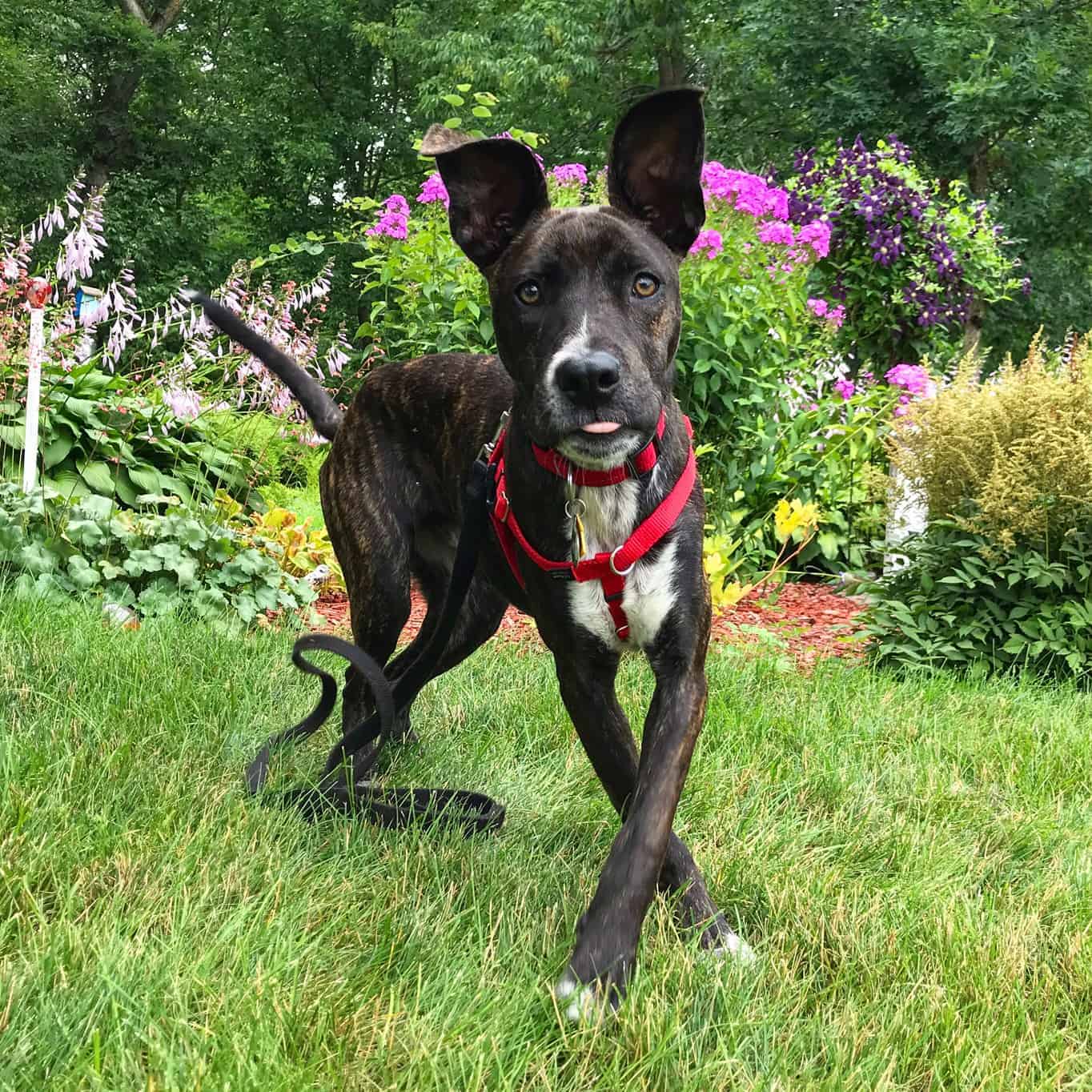
Every dog should know the basics … come, sit, down, and stay make everyday life together more harmonious. In addition to these skills, there are some behaviors that are especially useful for traveling. Teach your dog the skills listed below, and you’ll both be safer and happier!
Go Potty
Training your dog to relieve himself on command is invaluable when you travel. Some dogs are accustomed to only going on one surface, like grass, and that surface might not be easy to find at every rest area, hotel, or campground. Having this behavior on cue is also wonderful late at night or when it’s raining!
The good news is that teaching “go potty” is super easy. And you can work on it several times a day. All you need is a leash and a healthy dose of patience.
Start first thing in the morning with your dog leashed. Take him to the area you want him to go, and say “go potty.” Then wait. Do not move your feet. And wait. Then wait some more. Eventually your dog will go. When he does, give him treat and tell him that he’s such a good boy! If you’re practicing this in your yard, wait until after he goes to remove his leash and let him sniff around. Being free will become part of the reward.
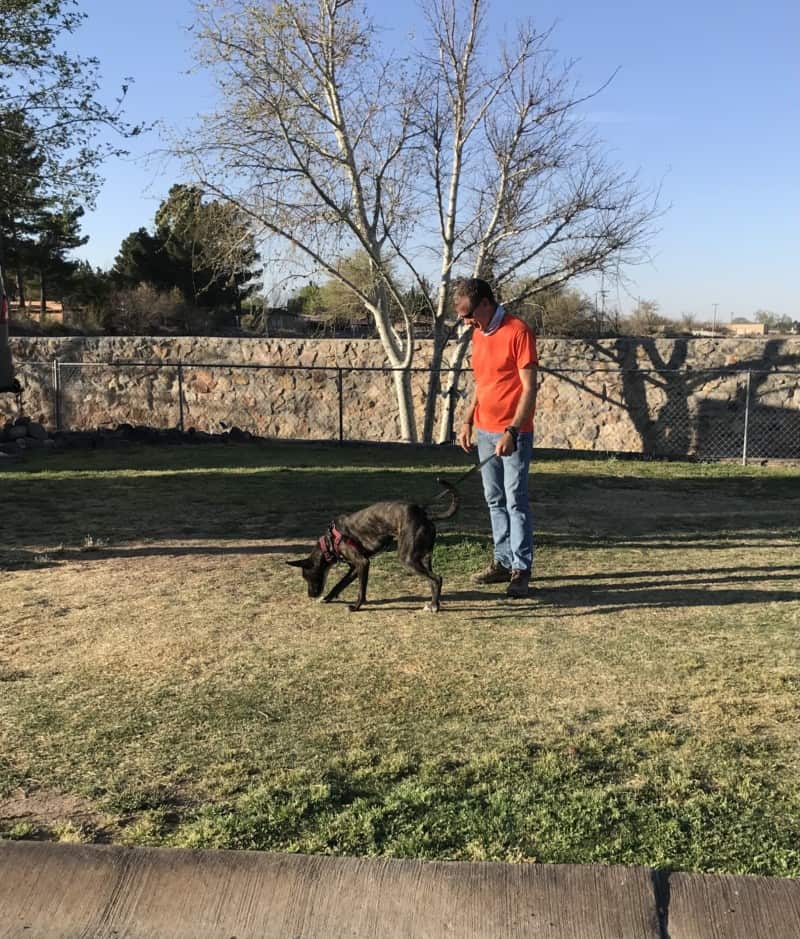
Leave It
You will encounter all kinds of things that you’ll want your dog to ignore when you’re traveling. A pile of chicken wings on the sidewalk, a dog lunging at a fence, someone else’s lunch at a pet friendly café. As we raise a puppy in our motorhome, “leave it” might be the most used phrase in our vocabulary.
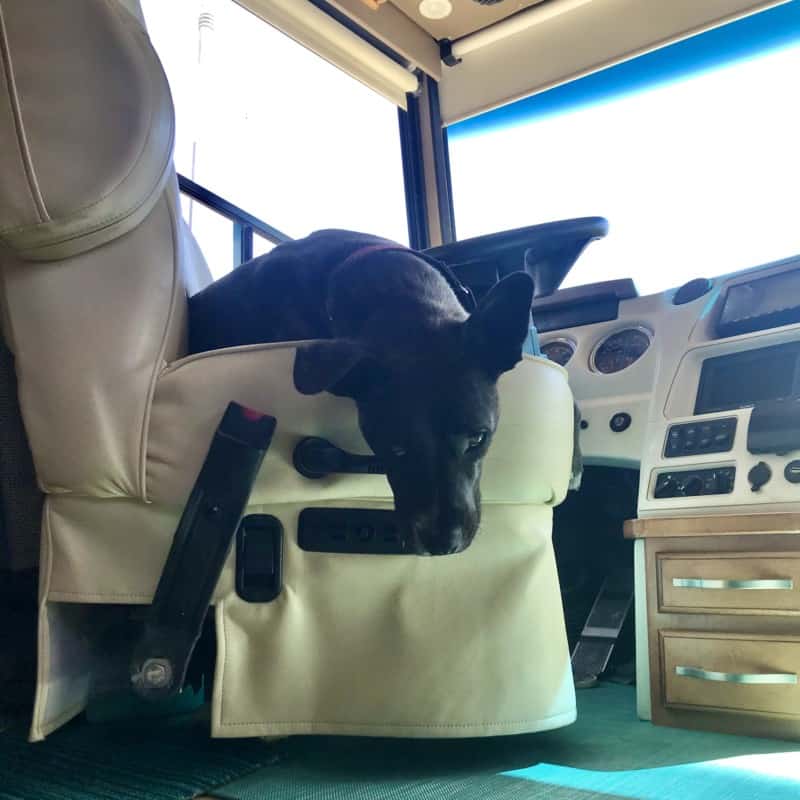
It’s best to start training “leave it” with something that’s only mildly interesting to your dog. Show the item to your dog, and he’ll probably sniff it. As he starts to lose interest, say “leave it” and then reward him.
As he catches on, use items that are more interesting to you dog. Just remember, the harder the challenge, the more appealing the reward.
Wait
When it comes to keeping your dog safe when you travel, training him to “wait” could be the most valuable. For us, asking Myles to “wait” means he needs to stay put until we say it’s okay to move. This is the command we use to keep him from running out of the motorhome or jumping out of the car before we’re ready.
Buster showed me the importance of this behavior. That boy used to race me down the RV steps. And at 80 pounds, he could throw quite a hip check! Today I remember it with a chuckle. But truly, it wasn’t a safe situation for either of us.
With Myles, we make it a point to teach him to “wait” every time we leave the motorhome. Once I’m down the steps I turn around and say, “let’s go,” which is his invitation to join me.
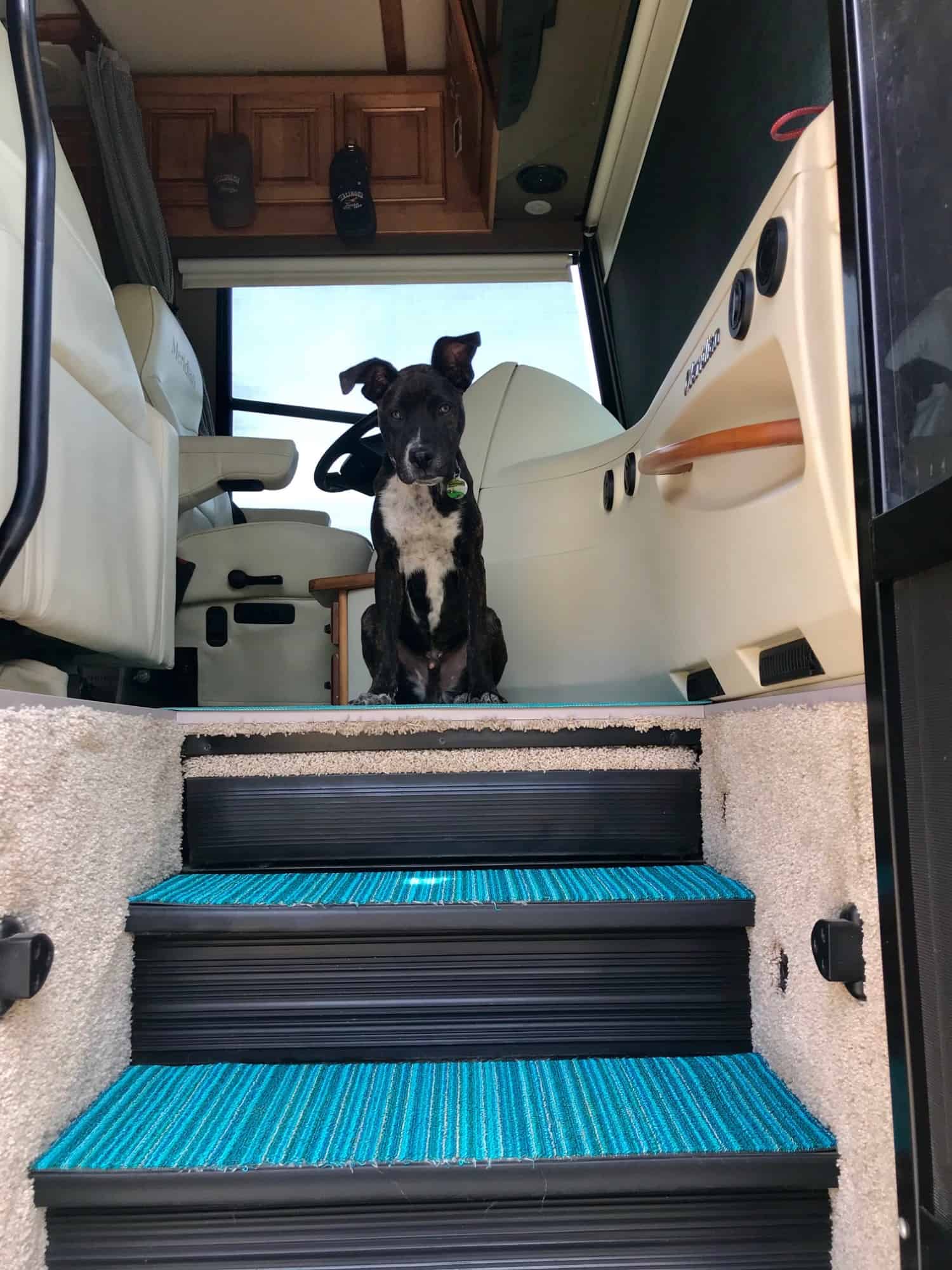
We do the same in the car — Myles waits while we attach his leash, take off his seatbelt harness, and put on his walking harness. This is an especially vulnerable time when it’s easy for a pet to bolt and get lost. Teaching your dog to “wait” could save his life.
The best part is that “wait” is also easy to teach! Being able to come with you is likely all the reward your dog will need.
Right Here
This skill is similar to “heel,” but not as precise as most trainers would teach it. Basically it means to walk beside and watch me until you’re released.
This is an handy command when you’re in a crowd, when you meet a dog on a trail who’s not fond of other dogs, or anytime it’s safer for your dog to stick close to your side.
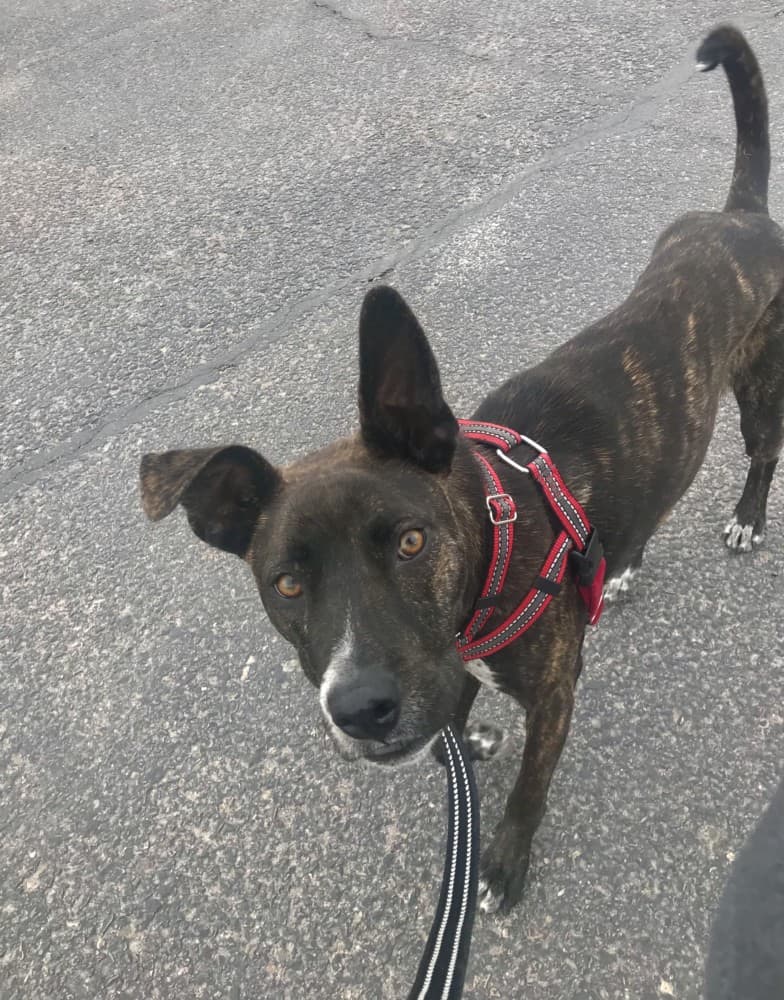
Say Hello
We never had a need to teach Ty or Buster to “say hello.” Ty was afraid of strangers and preferred to keep his distance. And Buster was a German Shepherd who was more focused on us than other people.
But Myles is a completely different story. He’s the most social dog I’ve ever met and wants everyone to stop and pet him. He wiggles his whole body when he sees strangers walking toward him, and even sings an “arrrooooo” to get people’s attention.
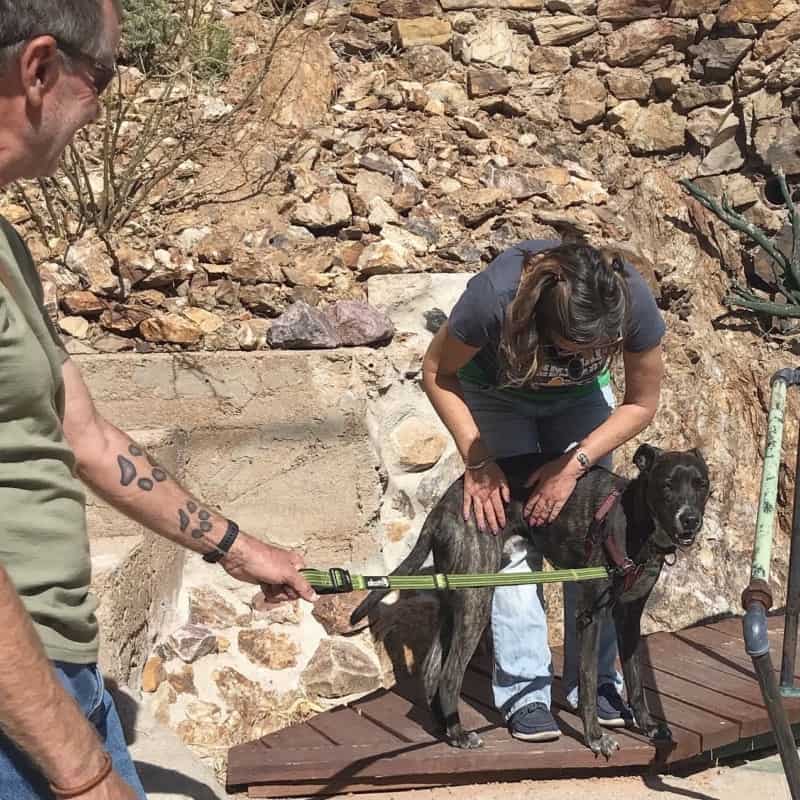
When you’re traveling, you’re more likely to be in places where other people are walking around. If your dog is like Myles, he has no concept that some people aren’t inclined to pet dogs or might just be too busy to pay attention to him.
To help Myles decipher when it’s alright to approach someone, we’ve taught him to “say hello.” I’ll be honest — this is still a work in progress! Overcoming his natural tendency to greet everyone hasn’t been easy. But Myles does seem to be catching on that “say hello” is his cue to love on the closest person.
On Your Mat
Eating out was a difficult activities with Ty and Buster, and one I was determined to get right with Myles. Being a puppy, I knew he’d have a hard time sitting quietly for the length of time it took to eat a meal. So I came up with an easy way to keep him entertained while we dine.
We started out feeding him dehydrated dog food from The Honest Kitchen. It’s super for traveling dogs, because a 10 pound box makes 40 pounds of food. And it’s human grade! I mix it up each night and freeze it in three (affiliate link) West Paw Zygoflex Tux toys.

Since Myles was a puppy, we’ve fed him by pulling one of the toys out of the freezer and putting it on a piece of yoga mat. Teaching him to keep the toy on the mat while he was eating was easy — anytime he moved it off the mat we told him “uh-oh” and put it back.
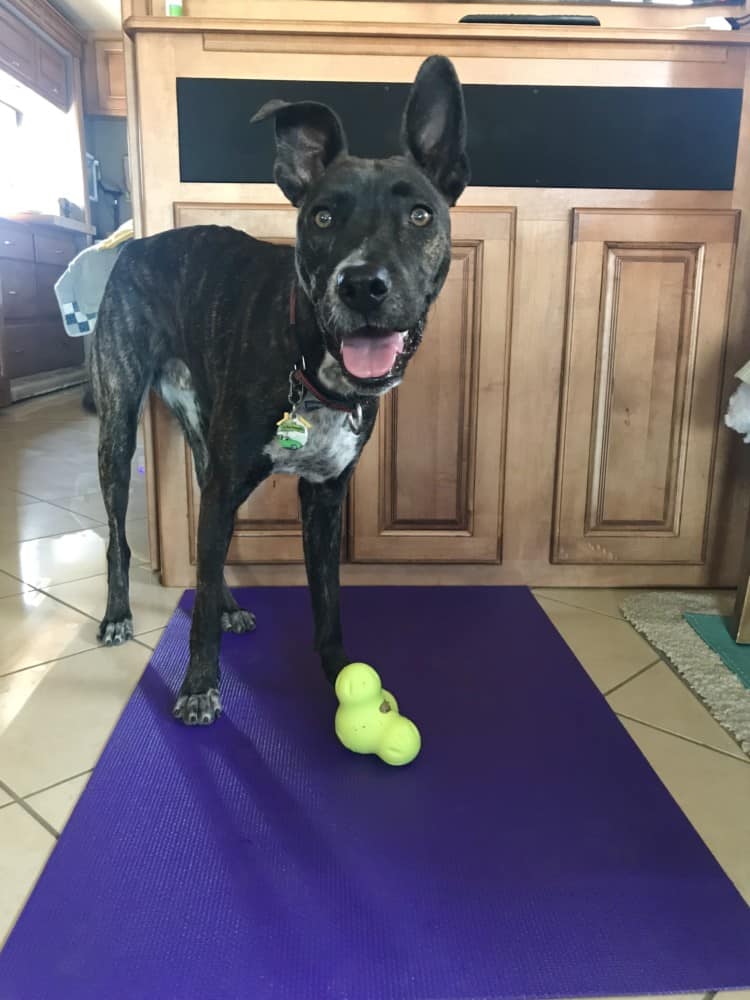
Get $10 Off (affiliate link) Your First Order
Of $20+ at HonestKitchen.com
Now we can pack his stuffed toys when we want to have a picnic, visit a winery, or eat on a pet friendly patio. We just keep a piece of yoga mat in the car, and have an (affiliate link) insulated doggy lunch bag to carry his frozen, (affiliate link) stuffed toys.

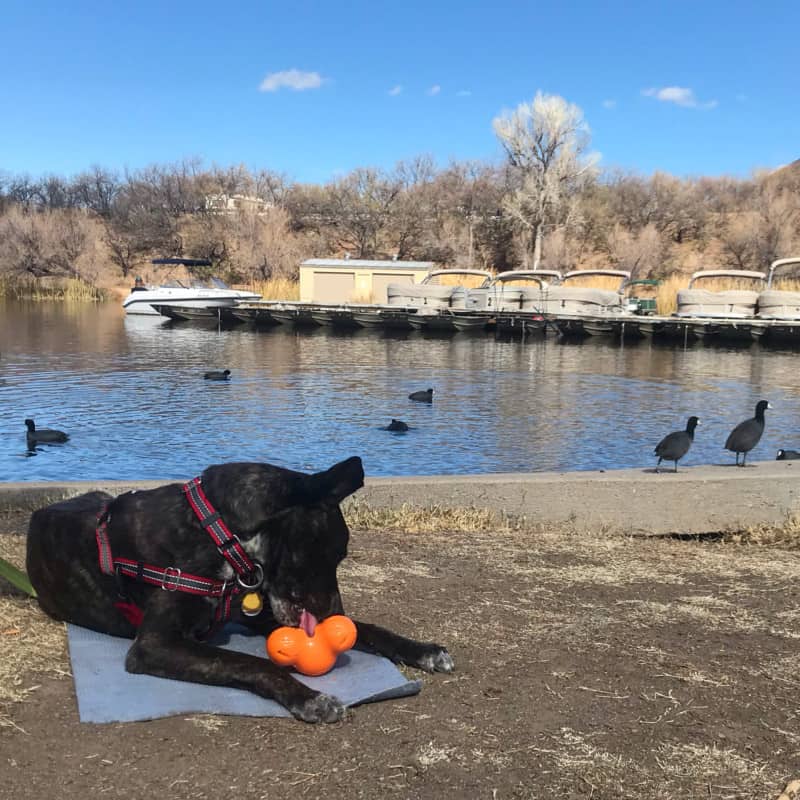
Tell Me and Hush
Dogs bark. It’s just in their nature. But in a hotel or campground it can be a real problem. Not only will it annoy your neighbors, but it could get you thrown out.
Teaching Myles to hush was even more vital for us, because he loves to sit in the driver’s seat and watch people and their dogs go by. We simply couldn’t have him barking at everyone!
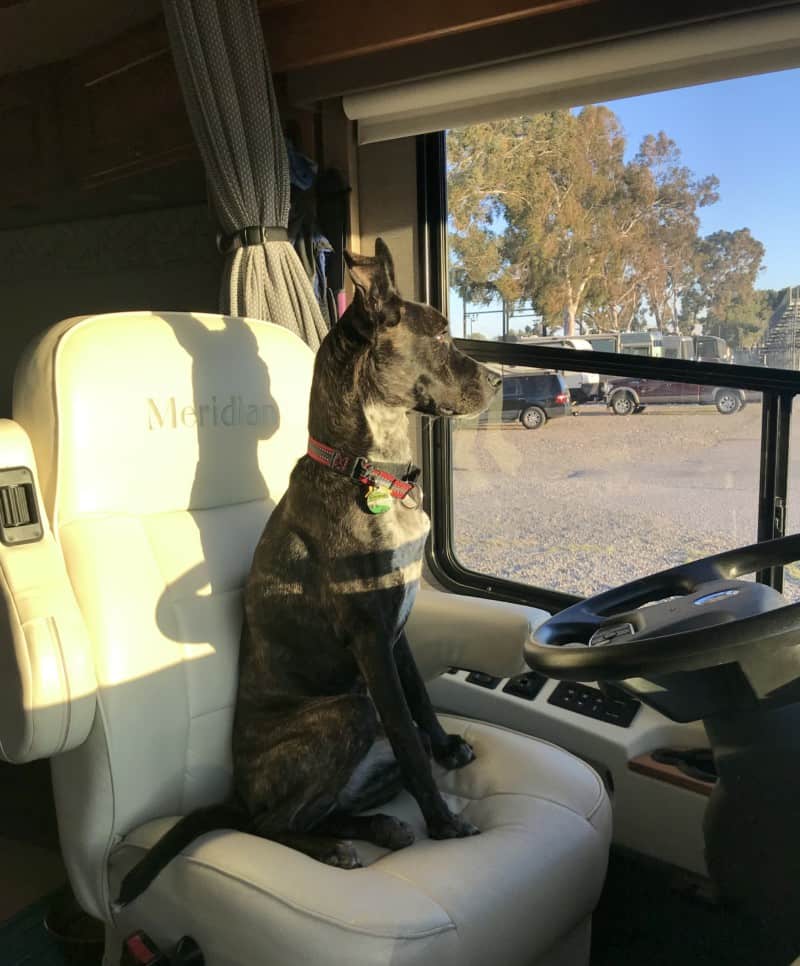
Training your dog not to bark while you travel is easier than you think, but the starting point might surprise you. To teach Myles to “hush,” we first taught him “tell me,” which means bark, sing, or howl to your heart’s content. And as a reward, we join in! (This is best done at home BEFORE you hit the road.)
During the “tell me” barking jag, we grab a treat, hold it in front of Myles’ nose, and say “hush.” Dogs can’t sniff and bark at the same time, so Myles immediately quiets down to sniff and eat his treat. Easy peasy!
Once Myles got the hang of “hush” we started giving him the command anytime a dog walked by the motorhome. When our timing is good, we get to him before he barks! Then we tell him what a good boy he is and feed him a few treats while the dog saunters past. It works like a charm.
Watch Me
Getting pictures of your travel buddy is one of the best parts of traveling together, so you’ll want to teach your dog “watch me.” When we use this command, we’re asking Myles to look at us, usually while we take his picture.
There are a million opportunities a day to practice this skill! Anytime your dog wants something — a treat, his stuffed toy, for you to open the door — ask him to “watch me.” Slowly add distractions and extend the time you require his eye contact before you give him his reward. You’ll be amazed how fast he learns!
READ MORE ⇒ Six Simple Steps To Get Your Dog Posing For Photos
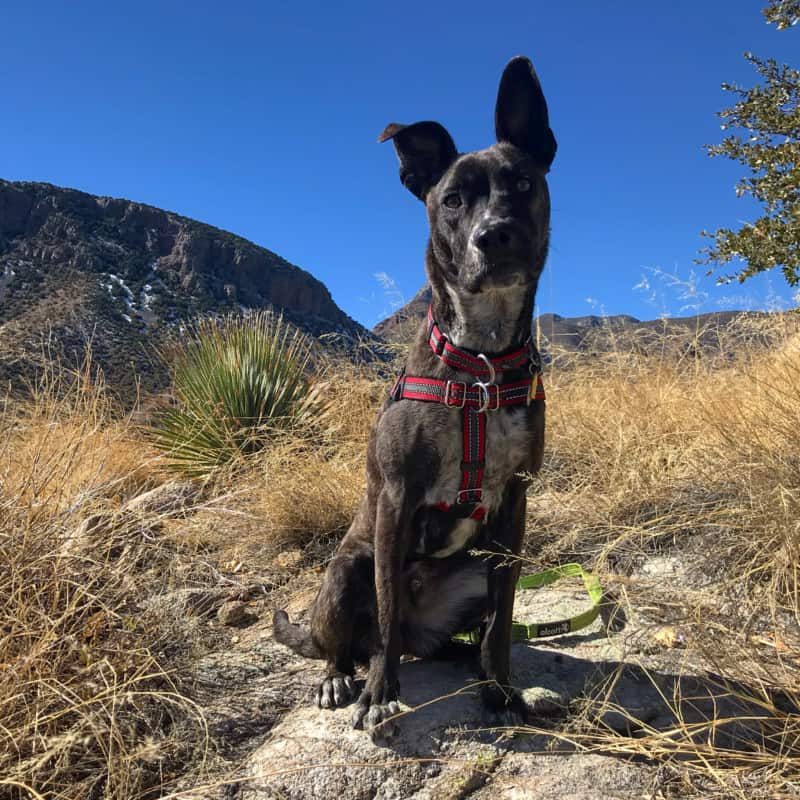
The effort you invest into training your dog to be a great travel companion will have a big pay off. Not only will you be better able to keep him safe, but being able to communicate to him what’s expected in new situation will decrease his anxiety and help you relax. And the better behaved our traveling dogs are, the more places they’ll be allowed to go!
Amazon Affiliate Disclosure: GoPetFriendly.com LLC is a participant in the Amazon Services LLC Associates Program, an affiliate advertising program designed to provide a means for website owners to earn advertising fees by advertising and linking to amazon.com, audible.com, and any other website that may be affiliated with Amazon Service LLC Associates Program. As an Amazon Associate, the owner of this site earns a commission from qualifying purchases.
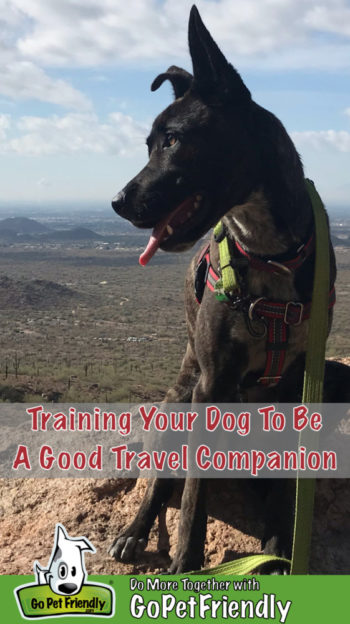
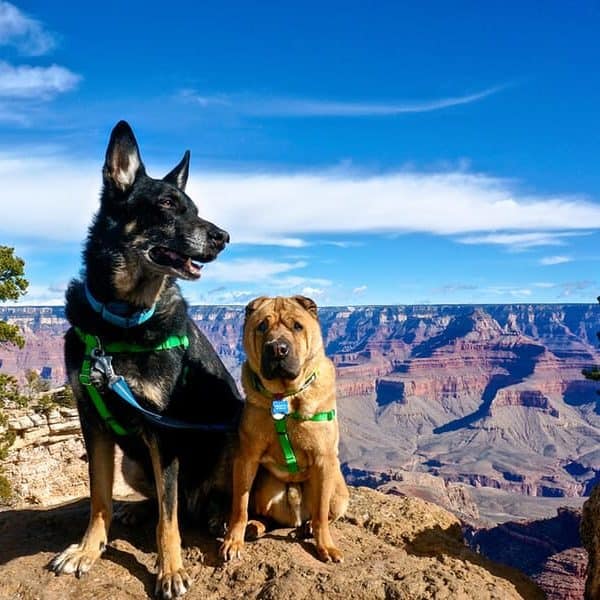
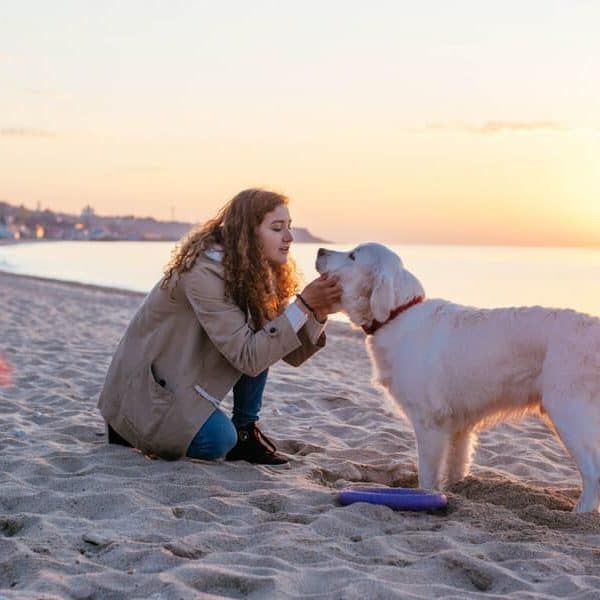
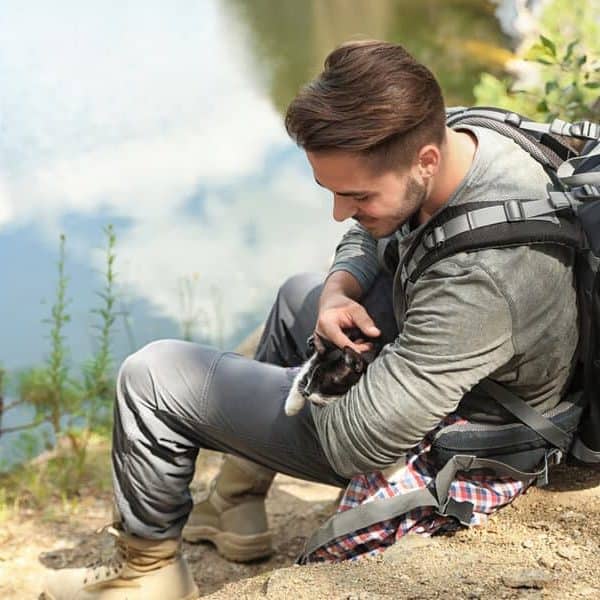
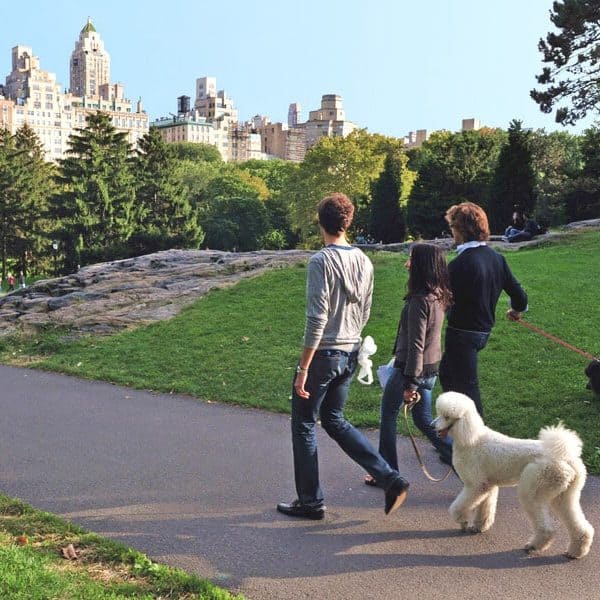
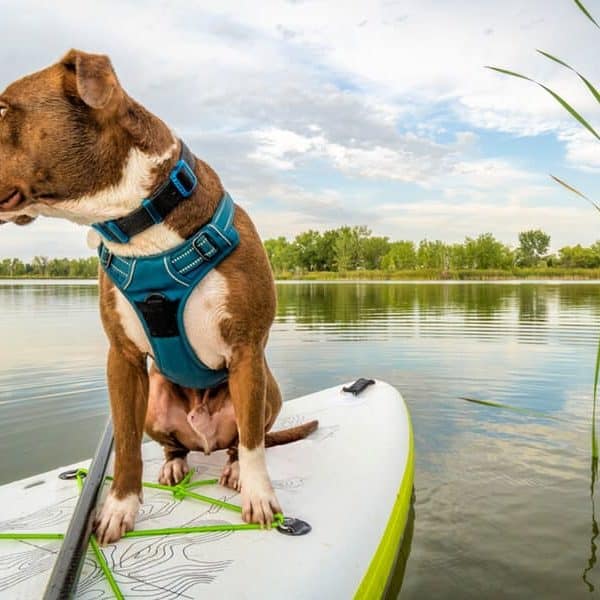
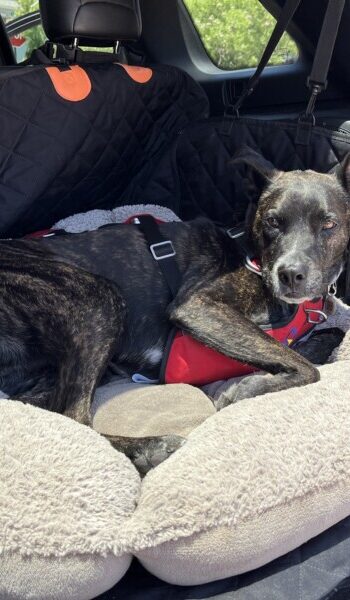
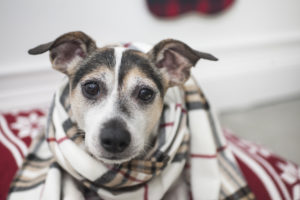



Love these tips and basic steps on how to train them. Thank you.
This is great!! Thank you!!!
Thank you. Lots of ideas and great advice. I have 2 puppies and I want to be able to take them with me as often as I can and I am always looking for training tips & instructions so thanks again.
We’re happy to help, Robin. Safe and happy travels to you and your pups!